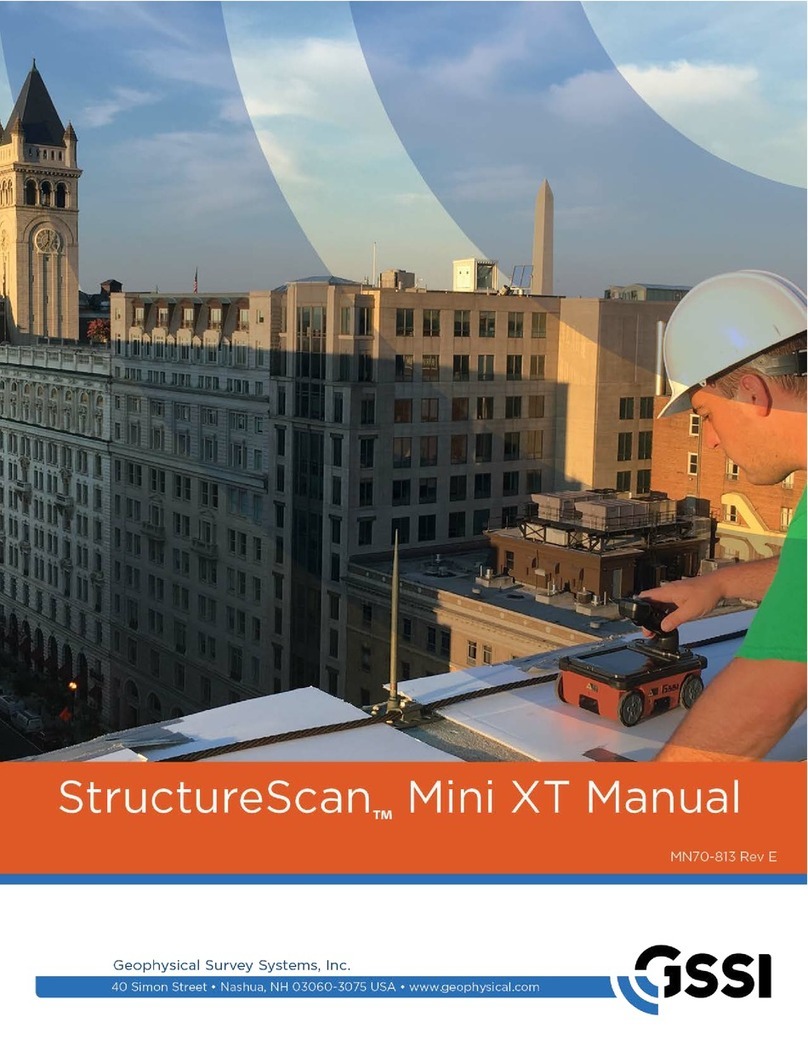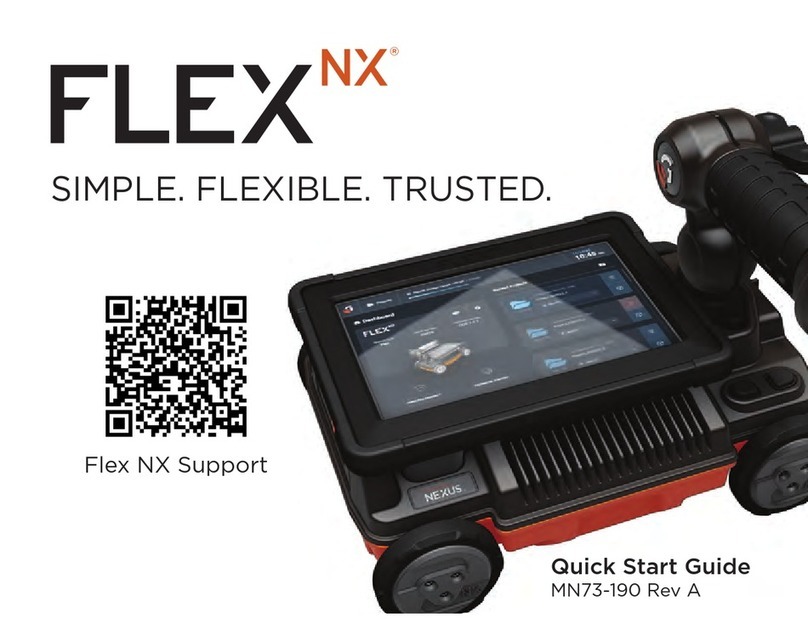
Geophysical Survey Systems, Inc. Flex NX®/NX25 User Guide
MN 73-362 Rev A 4
What is NEXUS™?
NEXUS is GSSI’s newest and most advanced technology platform, and it is the engine that will
drive our future industry-defining innovations. A technological triumph, the core elements of
Nexus will facilitate a profound leap forward in GPR performance, data stream integration, and
user experience. Nexus is the tangible representation of GSSI’s Simple, Flexible, and Trusted
mission, and its continual evolution will lead to vast improvements in system design, application
relevancy, and interoperability of Nexus-cored technologies. We invite you to learn more about
Nexus, and its capabilities, by contacting your GSSI sales representative.
Flex NX and GSSI Fusion™
Flex NX was designed with GSSI’s Fusion platform at the forefront. Our vision was to create a
reporting platform that seamlessly integrated with our field devices. Fusion is the culmination of
that effort. As a quick and easy reporting tool, Fusion acts as an efficient organizational system
for uploading Flex NX data, adding results and descriptions, integrating field photos, and
submitting a professional report branded with your company logo.
GSSI’s mission is to make your scanning life as painless as possible. Our ultimate goal is the
seamless interoperability of our hardware and software designs. We understand that, in most
cases, a report is a procedural bottleneck that must be submitted before you leave the jobsite. To
this end, Flex NX’s project structure mirrors GSSI Fusion’s project management environment.
Create new projects on Flex NX, create Areas of Interest and capture results and then transfer your
project to a mobile device or USB drive. Next, simply upload your projects to Fusion and your
project will be set up just like you left it. Enter notes, add field photos, and generate a report. Then
move on to your next job knowing that your polished and branded report will be digitally available
to your client.
We invite you to learn more about GSSI Fusion, and how it can streamline your project reports, by
contacting your GSSI sales representative.
GPR Theory Overview
Ground Penetrating Radar (GPR) is a geophysical method that uses radar waves to image
subsurface materials. It is commonly employed in construction, geology, archaeology, civil
engineering, and environmental studies. Nearly all GPR applications share a common goal: rapid
and non-destructive assessment of subsurface targets for mapping, avoidance, or physical
inspection. All GPR technology acts as a true remote sensing method, whereby imaging occurs
before buried targets are visually inspected. In other words, we cannot know precisely what we
are imaging until it is directly observed. However, experience with GPR will improve your
interpretation of the resulting data, and knowledge of concrete construction techniques will
provide greater insight.
GPR operates on the principles of electromagnetic wave travel and reflection. Basic GPR theory
involves an antenna transmitting short waves of electromagnetic energy into the ground,
concrete, or other material. The waves travel through different subsurface materials, partially





























